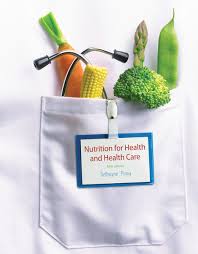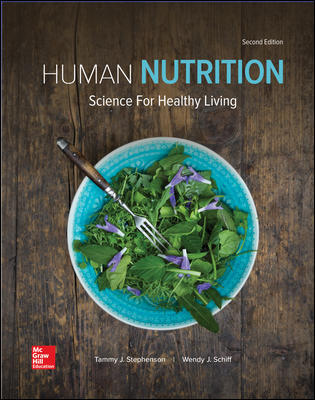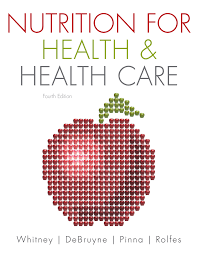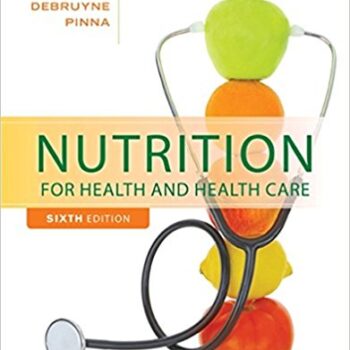
Test Bank Nutrition Therapy and Pathophysiology 3rd Edition by Marcia Nahikian
Original price was: $75.00.$45.00Current price is: $45.00.
Digital item No Waiting Time Instant DownloadISBN: 9781305111967
In this post, we review the Test Bank Nutrition Therapy and Pathophysiology 3rd Edition by Marcia Nahikian, an invaluable resource for learners and educators in nutrition and healthcare. This is a useful test bank that contains information and practice questions that assist students in grasping and mastering key areas in nutrition therapy and pathophysiology. To this end, we are going to discuss the advantages of the test bank nutrition therapy and pathophysiology 3rd edition, its main topics, and how they enhance the learning experience.
Why Choose This Test Bank?
As most students and educators know, the most convenient way to execute your study sessions is by using a test bank. The Test Bank Nutrition Therapy and Pathophysiology 3rd Edition has a rich selection of problems such that they resemble the real exam standards. This way, you can practice properly and build your confidence in the knowledge you possess. Furthermore, the test bank has been developed in a way that corresponds to the textbook so that you only study relevant resources.
Key Topics Covered
Many of the important areas needed to examine nutrition therapy and pathophysiology are also represented in the test bank. These include:
- Nutritional Assessment: Determine how to assess nutritional requirements and implement necessary changes in nutrition.
- Metabolic Pathways: These are the chemical reactions that nutrition and health are built on.
- Disease Prevention: Discover the role nutrition may have in chronic disease prevention.
- Therapeutic Diets: Insight into diet construction for selected diseases.
- Clinical Case Studies: Translate theory into practice using the case studies provided in the test bank.
Benefits of Using the Test Bank
More advantages arrive with the use of Test Bank Nutrition Therapy and Pathophysiology 3rd Edition:
- Enhanced Learning: You can enhance your study of the material and practice the content by answering the questions based on the textbook.
- Exam Preparation: Make sure to know the structure and types of questions you will have in the exams.
- Time Management: Adjust and work on time management through test settings in quizzes.
- Confidence Building: Frequent practice enables one to gain confidence, decrease anxiety, and perform better in the real exam.
How to Use the Test Bank in the Correct Manner
To get the most out of the test bank, consider the following points:
- Practice Consistently: Create a dedicated slot during the week that you’ll utilize to complete test bank questions.
- Evaluation of Responses: Once you finish a given set of questions, go back and analyze how you responded to the questions and the reasons for any errors.
- Identifying Stronger Topics: Avoid concentrating on topics where you do well as this would only serve to waste your time and pick out topics where you have a weakness and try focusing time on these.
- Practice under Examination Conditions: Practice tests should be taken from time to time to test the limits of your comprehension and knowledge retention.
Summary
The Test Bank Nutrition Therapy and Pathophysiology 3rd Edition by Marcia Nahikian test bank is an excellent resource for students of nutrition therapy. It is effective not only for revision before exams but also helps to understand complicated subjects. With this test bank at hand, students can optimize their study process and be victorious in their studies. Invest in your learning today and appreciate the impact that it has on your knowledge and skill in nutrition therapy fundamentals.
Test Bank Nutrition Therapy and Pathophysiology 3rd Edition by Marcia Nahikian
Chapter 03 – Nutrition Assessment – Foundation of the Nutrition Care Process
1. Determination of ____ involves an attempt to project potential nutrition problems based on the client’s current health status.
a. nutritional risk
b. nutritional status
c. nutrition screening
d. nutritional assessment
e. nutrition recall
ANSWER: a
DIFFICULTY: Bloom’s: Understand
REFERENCES: Nutritional Status
2. The process of identifying patients who may have a nutrition diagnosis and who would benefit from nutritional assessment and intervention by an RD is defined as:
a. nutrition-focused physical examination
b. nutrition assessment
c. estimating nutrition needs.
d. nutrition screening.
e. calculating nutritional risk.
ANSWER: d
DIFFICULTY: Bloom’s: Understand
REFERENCES: An Overview: Nutrition Assessment and Screening
3. A patient reports that she has nausea after eating and often vomits at least once a day. This type of data is considered to be:
a. objective.
b. biochemical.
c. clinical.
d. anthropometric.
e. subjective.
ANSWER: e
DIFFICULTY: Bloom’s: Apply
REFERENCES: An Overview: Nutrition Assessment and Screening
4. A patient decides that she will eat only while sitting at the kitchen table with family members. This is an example of which component of the subjective food- and nutrition-related history assessment?
a. behavior
b. food and nutrient intake
c. nutrition-related patient measures
d. physical activity and function
e. knowledge and beliefs
ANSWER: a
DIFFICULTY: Bloom’s: Apply
REFERENCES: An Overview: Nutrition Assessment and Screening
5. In 2012, approximately how many Americans were unable to purchase or acquire enough food to sustain their families?
a. 3 million
b. 12 million
c. 21 million
d. 36 million
e. 49 million
ANSWER: e
DIFFICULTY: Bloom’s: Understand
REFERENCES: An Overview: Nutrition Assessment and Screening
6. Data collected during the 24-hour recall is gathered:
a. retrospectively.
b. exponentially.
c. prospectively.
d. pronominally.
e. projectively.
ANSWER: a
DIFFICULTY: Bloom’s: Apply
REFERENCES: Food- and Nutrition-Related History
7. The USDA Multiple Pass Approach is a nutrition assessment method that is very similar to the:
a. food diary.
b. 24-hour recall.
c. mini nutritional assessment.
d. food frequency method.
e. calorie count method.
ANSWER: b
DIFFICULTY: Bloom’s: Apply
REFERENCES: Food- and Nutrition-Related History
8. Which best explains the food frequency data collection method?
a. The energy value of foods is calculated and totaled for each day
b. The client records the types and amounts of foods eaten each day
c. Foods are grouped and classified into a retrospective review of intake
d. A clinician reviews the types and amounts of foods a client has eaten in the last 24 hours
e. Foods are ranked on a numerical scale and the total numbers are calculated every 24 hours
ANSWER: b
DIFFICULTY: Bloom’s: Analyze
REFERENCES: Food- and Nutrition-Related History
9. The ____ were established by the U.S. Food and Drug Administration to assist consumers in interpreting nutrition labeling information.
a. Daily Values (DV)
b. Dietary Reference Intakes (DRI)
c. Adequate Intakes (AI)
d. Tolerable Upper Intake Levels (UL)
e. Estimated Average Requirements (ERA)
ANSWER: a
DIFFICULTY: Bloom’s: Understand
REFERENCES: Evaluation and Interpretation of Dietary Analysis Information
10. Which best describes an advantage of using USDA Food Patterns?
a. They are a clear guide for preventing disease through nutrition
b. They are comprehensive and contain information about macro- and micronutrients
c. They can be paired with exercise analysis to promote weight loss
d. They are easy to access and quantify food consumed from each of the major food groups
e. They contain exchange lists for people with certain types of illness, such as diabetes
ANSWER: d
DIFFICULTY: Bloom’s: Analyze
REFERENCES: Evaluation and Interpretation of Dietary Analysis Information






